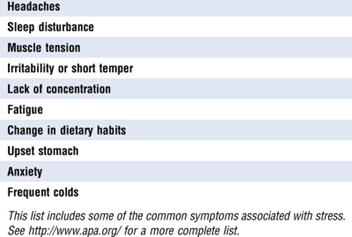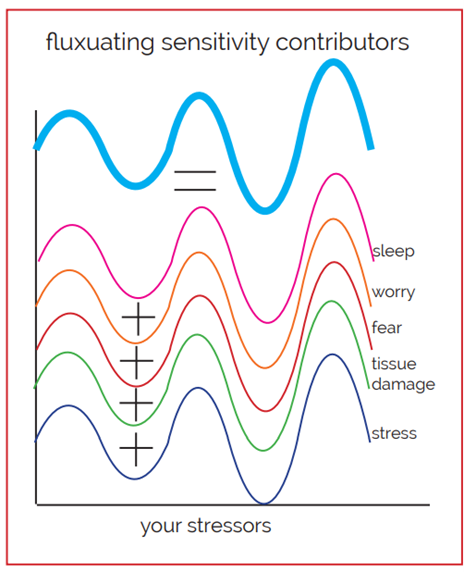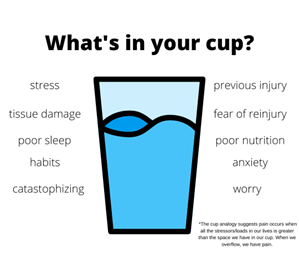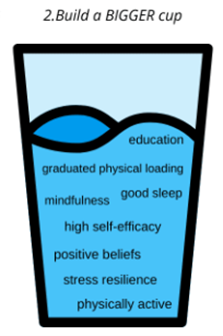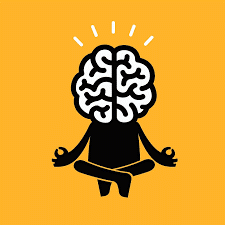What’s in your cup? Pain and stress management
A big thanks to Makena Spanier for her blog post - enjoy!
Why does stress affect my pain levels?
Before sinking our teeth into the impact of stress on our pain, we need to answer the question, “what is the stress response?”
This can be answered in a few different ways:
“Stress can be defined as a state of worry or mental tension caused by a difficult situation. Stress is a natural human response that prompts us to address challenges and threats in our lives. Everyone experiences stress to some degree. The way we respond to stress, however, makes a big difference to our overall well-being.” (World Health Organization)
There can also be different types of stress (acute, episodic, chronic) that elicit a hormonal response in our body for “fight or flight”. This reaction can be either a healthy response that can save our life or a stimulus that can become problematic over time
Stress is a natural reaction to not being able to cope with specific demands and events, but ongoing stress can affect a person's health and wellbeing.
In summary, the stress response is closely related to emotional, social, and cognitive aspects of our lives.
Common symptoms of stress:
The next big question to address: what is pain? Why does stress affect what should be a simple response to a trigger or event in our physical environment?
“Pain is the neurological distressing response that is associated with ACTUAL or POTENTIAL damage. ”
So what’s the different between ACTUAL and POTENTIAL damage?
This brings into question the topic of hurt vs harm. Hurt being the concept of pain with no actual damage, an example of this being a pinch to the skin. While harm is the concept of pain when actual damage has occurred, an example being an ankle sprain where the tissue has been strained. This is a very important distinguishing factor when considering pain and the many reasons you may feel it.
Pain is closely associated with:
- Sensory components
- Emotional components
- Social components
- Cognitive components
You may have noticed some similarities between stress and pain already. Both are very unique to the person and the response may be dependent on the components mentioned above. It is not easy to balance all these aspects of life, as they both have things we can change and or control versus things that are outside of our control and can't be changed.
Example of factors we CAN control and change
- Diet
- Exercise
- Habits eg. Smoking
- Sleep
Example of factors you CAN'T control and change
- Age
- Sex
- Heritage
- Environmental Changes
- Tissue Damage
The Overflowing Cup Analogy
The cup analogy is a great tool to use to help identify stressors in your life that may be leading to an increase in pain in your day-to-day activities, the likes of which may not be related to any actual harm.
Every person has an imaginary cup that has some water in it. This is an example of your tolerance for stressors that may add to your pain. Stressors in your life are things that might go into your cup, for example a big deadline coming up at work, or a bad night's sleep that may lead to the water in your cup rising. Once the water rises over the edge of the cup and begins to overflow, someone may begin to experience pain. It is not very common that there is a singular cause contributing to the cup overflowing, but more often than not it is a result of a variety of factors coming together to contribute to the pain response.
How does this help me?
Removing Stressors from the Cup- identifying these factors helps us control our pain related to stress. Not every factor can be changed, but removing stressors that can be eliminated helps decrease our “water” levels and helps prevent those painful experiences. Things like poor diet, lack of exercise, or poor sleeping habits are all things we have the power to change.
Building a Bigger Cup - Building a bigger cup is all about building tolerance to activities you can't change. Something like needing to lift heavy objects at work or increased sitting tolerance, these are things that are outside of our control. We can work on building a bigger cup through increasing our tolerance to these activities. Resilience to these stressors helps control the pain experience we have with the overflowing cup.
Exercise is one of the best ways to build tolerance to physical stressors. Being physically active can improve the way our body handles the stress response, and also has positive effects on our neurotransmitters in our brain that will affect our mood and behaviors. Incorporating exercise into your routine can help manage stress levels and also build tolerance to physical tasks that may be contributing to your pain.
Self Reflection Time
Sometimes stepping back and looking at what's in your cup can be a great tool to self-identify some of those stressors that can either be removed or improved upon by building resilience.
What do you think may be contributing to your pain? What's in your cup?
What about the positives? What makes your cup bigger, making you more resilient? What are the things that seem to help?
What are some stressors you could remove to help with pain?
What are some things you can do to help build tolerance to the stressors contributing to your pain that you can not remove?
Closing Remarks
You can't simply separate a person's stress response and their pain response that occurs; as discussed, there are a lot of factors that are all at play that determine our own personal pain experience. It's important to reflect on these stressors to help identify your own personal triggers.
Use reflective strategies that help you address these varied stressors – do your best to remove some of the water from your cup and/or build yourself a bigger cup!
References
https://www.medicalnewstoday.com/articles/145855#types https://static1.squarespace.com/static/57260f1fd51cd4d1168668ab/t/590dca266b8f5b01a7f97ceb/1494075961206/recovery%20strategies%20pain%20guidebook%202017.pdf
Images (of cups): (Greg Lehman Recovery Strategies): https://static1.squarespace.com/static/57260f1fd51cd4d1168668ab/t/590dca266b8f5b01a7f97ceb/1494075961206/recovery%20strategies%20pain%20guidebook%202017.pdf


